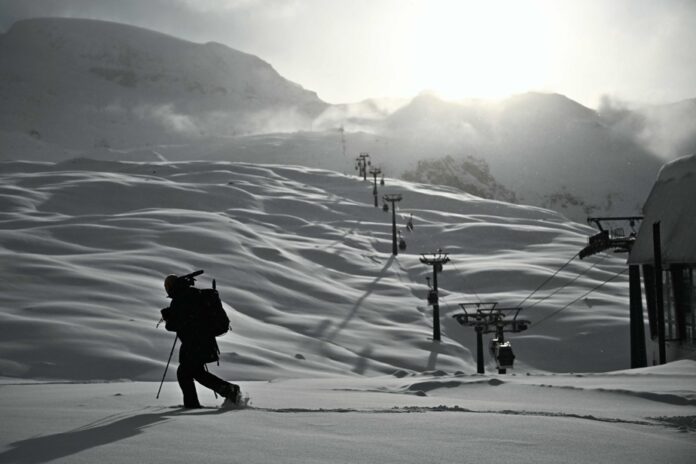(Paris) After three weeks and as many canceled races, the best skiers in the world must finally start their season on Saturday in Gurgl in Austria, while the women’s circuit meets in Zermatt-Cervinia… unless the weather gets involved Again.
Too much wind in Sölden (Austria) at the end of October, too much snow in Zermatt (Switzerland) last weekend: three weeks after the start of the Alpine Skiing World Cup, the men have not yet been able to unlock the counter points and repeated postponements have relaunched the debate on an adaptation of the competition calendar.
In the Austrian Tyrol, 47 lucky people were able to complete a first run of the opening giant slalom, but the race was interrupted and then completely canceled due to impressive gusts of wind.
Two weeks later, Marco Odermatt, Aleksander Aamodt Kilde and the others were to set off at an altitude of nearly 4,000 meters for a spectacular descent between Zermatt and Cervinia (Italy).
But for the second year in a row, this cross-border race, unprecedented in the history of the World Cup, also had to be canceled: too much snow this time. There wasn’t enough in 2022.
Year in and year out, it is in Gurgl, Austria, that the men’s season should begin on Saturday. A unique slalom is on the program in this small resort in Tyrol which is hosting the World Cup for the first time.
From the Norwegian Henrik Kristoffersen to the Swiss Ramon Zenhäusern and Daniel Yule via the Frenchman Clément Noël, the best slalom riders in the world will be there, with the huge exception of Lucas Braathen, Norwegian winner of the small globe in the specialty last season, but who surprised everyone by announcing his retirement at the age of 23 at the end of October.
For their part, the female skiers – who had experienced the same setbacks as the men at the start of last season – have for the moment escaped cancellations. After the giant of Sölden and the slaloms of Levi (Finland), they take over from the men in Zermatt-Cervinia on Saturday and Sunday for the first descents of the season.
Yet another cancellation of the events would further compromise the future of this Italian-Swiss stage, announced with great fanfare at the start of 2022 and supposed to open the season for speed specialists.
But the inauguration of the “Gran Becca” came up against the realities of a glacier that is difficult to tame in autumn and at this altitude: six descents (the 4 on the program last year and the 2 men’s races planned for next year). last week) in as many attempts were canceled.
“It was canceled last year due to a lack of snow, this year it’s canceled due to weather conditions. I think we saw the limits of this race,” said French Olympic downhill vice-champion Johan Clarey, now retired, on Sunday on Eurosport. “There’s really nothing wrong. »
The former skier, like others still active on the circuit, has positioned himself in favor of a change of calendar, with the first races later in the year. But the International Federation (FIS) and sponsors want to give visibility to skiing in the fall, before Christmas shopping and before the resorts fill up with tourists.
Zermatt-Cervinia has also not escaped environmental controversies after the Swiss press published images in October of excavators digging the glacier ahead of the competition, partly unauthorized work which goes badly in the midst of the climate crisis.
On a course shortened by a few hundred meters compared to the men, the women must set off at an altitude of 3,500 meters on the Théodule glacier to descend three kilometers of slope and almost 700 meters of altitude difference.
The Italian Sofia Goggia, four-time winner of the discipline’s ranking, is going after a fifth crown this season… if the races take place.
The first training session scheduled for Wednesday had to be canceled due to bad weather. However, it could well have taken place on Thursday and the weather forecast is improving for the weekend.















